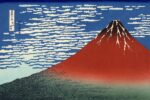58. Biennale – Weather Report: Forecasting Future
.jpg)
Weather Report: Forecasting Future è il progetto che rappresenta i Paesi Nordici alla Biennale di Venezia.
Comunicato stampa
Ane Graff, Ingela Ihrman, nabbteeri
Weather Report: Forecasting Future
Nordic Pavilion at the Venice Biennale
May 11–November 24, 2019
Opening: May 8, 2:30pm
Nordic Pavilion at the Venice Biennale
Giardini di Castello
Venice
Italy
www.kiasma.fi
www.modernamuseet.se
www.oca.no
Instagram
The exhibition Weather Report: Forecasting Future in the Nordic Pavilion at the 58th Venice Biennale is themed around the complex and varied relations between the human and nonhuman in an age when climate change and mass extinction are threatening the future of life on Earth. When imagining the future, humans face the responsibility of acknowledging multispecies entanglements and the need to renegotiate existing interspecies relations.
It is often difficult for humans to notice life forms that exist on a scale different from theirs, such as microscopic organisms, the slow workings of toxic agents, or durational processes of decaying organic matter. By heightening the visitors’ awareness of the materiality of the space and the artworks, and by assimilating their bodies to other life forms, the exhibition attempts to establish a connection with more-than-human agencies.
Ane Graff (NOR) creates works that combine her material research with a broad range of disciplines, e.g. microbiology, chemistry and feminist new materialisms’ re-thinking of material reality. Through her installations, she confronts the allegedly stable culture-based classifications, while asking how notions of human exceptionalism and dualistic thinking are connected to the ecological crisis.
The states of inflammation in Graff’s works refer to the connections between climate change, Western societies driven by economic growth, the extinction of immune-modulating intestinal microbes and the spread of inflammatory diseases. Her installation makes observable how the human body is entangled with other agencies, such as bacteria, as well as the toxicity of the environment. The displayed objects and their containers, the glass cabinets, refer to the human body and its current inflammatory state, emitting signals from the past and hinting at possible future scenarios. The cabinets’ glass surfaces indicate fluidity, as if they are melting before our eyes. In her sculptures, the materials keep interacting and forming new mixtures during the exhibition, denying the human control over them.
Ingela Ihrman (SWE) weaves together imagination, craft techniques, as well as sensibilities and personal experiences in her objects, moving images and texts. Occasionally, her installations include an element in which she performs dressed in a self-made plant or animal costume. Drawing on the feminist performance tradition, she uses her own body to critically analyse culture-nature divisions and to open up the prevailing gazes to queer horizons. Relating one’s own body to diverse material worlds or emulating their cycle of life can foster an enhanced understanding of life’s various entanglements.
Her algae installation tells a story of the liquid origins of human bodies and the existing connections between diverse lifeforms. Silent, large-scale objects invite the exhibition visitors to partake in a bodily experience. By allying with worlds commonly considered others, it is possible to transgress limiting concepts and to reconsider notions of belonging and co-existence. Visitors are invited to read Seaweedsbladet #1, a collection of texts and images that reflect on how the human body is linked to a variety of agencies.
nabbteeri (FIN) typically begins by mapping the place where they are temporarily set up. They gather the materials on site and incorporate recycled objects that evolve into mesh-like installations. Their works are compositions based on interactions between the artists and other things, including nonhuman organisms. They often focus on the tiniest life forms, minute species co-existing with us. nabbteeri slows down the working process in order to discover a locally-oriented practice, forming an intense relationship with existing knowledges.
In the constellation of elements for the Nordic Pavilion, nabbteeri delves into the materiality of the Pavilion and the Giardini. They also focus on the organic surplus, the garden waste produced by the Giardini. Compost marks an endeavour to create a self-maintaining, life-producing ecosystem within the pavilion premises. Nonhuman life is maintained inside the building by plant cuttings, tentacular beings that remind us of the rhizomatic quality of co-existence. The materiality of the travertine and concrete-built pavilion is reiterated in the sand-filled elements, which contain material that will be released in the Giardini after the biennale is closed. In the backyard, Dead hedge prevents human visitors from approaching the site from behind the pavilion, while offering a space for birds and invertebrates.
Nordic Pavilion
The art in the Nordic Pavilion is presented as a joint project by the Nordic Committee. The commissioner of the 2019 Nordic Pavilion will be the Museum of Contemporary Art Kiasma / Finnish National Gallery. The exhibition is curated by Kiasma’s director Leevi Haapala and curator Piia Oksanen. The co-commissioners of the other Nordic countries are Moderna Museet’s co-director Ann-Sofi Noring and Office for Contemporary Art Norway’s (OCA) director Katya García-Antón.
The exhibition Weather Report: Forecasting Future is supported by Jane and Aatos Erkko Foundation, Saastamoinen Foundation and Ministry of Culture and Education.



